


Agios Rumeli is located on the coast of the Mediterranean Sea, which the Cretans refer to as the Libyan Sea. The term Libyan Sea has been used since ancient times by ancient geographers to denote the eastern part of the Mediterranean Sea between the Libyan coast and Crete.

Agia Rumeli is a picturesque seaside town, inhabited since ancient times. The ancient city of Tara was excavated on the outskirts of the village. There is a Greek legend about the prophet Carmanor, who presided over a local sanctuary. Carmanor received Leta’s children Apollo and Artemis, in order to purify them after killing the dragon Python. Artemis and Apollo are the children of the god Zeus and his lover Leta. The jealous wife of Zeus, Hera, sent the dragon Python to devour her on Leta. Leta managed to give birth on the island of Delus, and when Apollo reached maturity, he decided to kill Python. He killed the dragon in the bay under Mount Parnassus, near the city of Delphi, where an oracle was founded in Apollo’s honor, which is named the Pythian Oracle after the dragon. As the dragon was also a deity, Apollo had to atone and purify himself for the murder in order to be able to climb Olympus again and receive divine duties. Carman’s granddaughter, named Carma, gave birth to Zeus’ daughter Britomartida, Atremides’ faithful hunting companion.
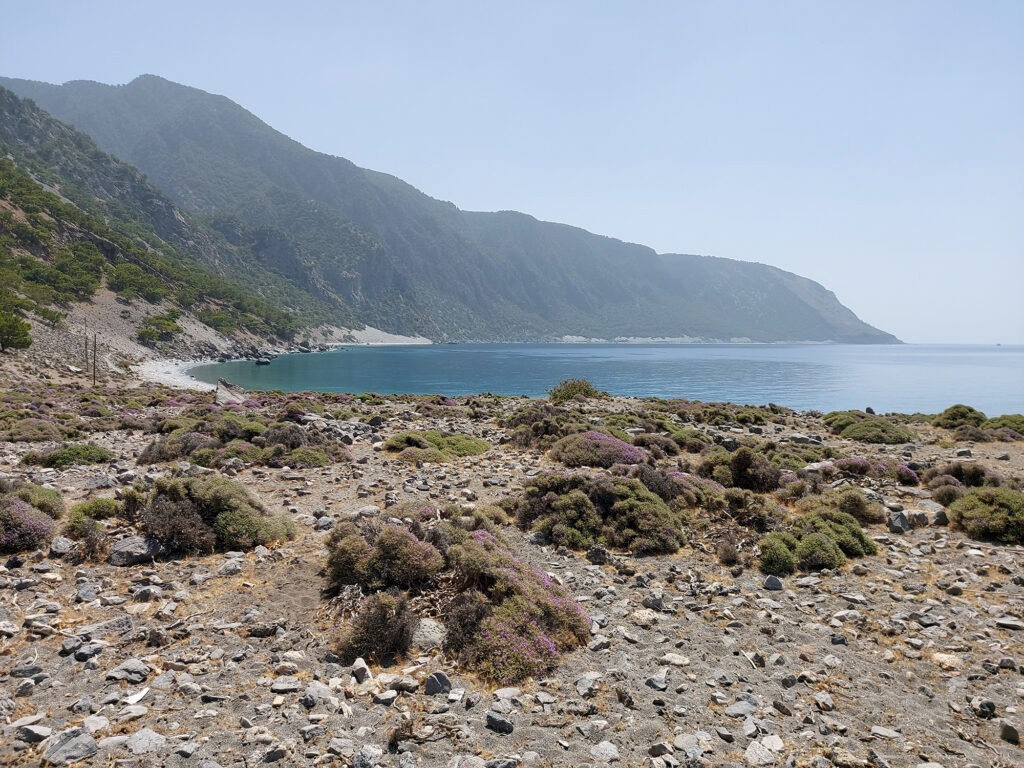
There is no land route to Agia Rumeli. The only way to get to or from the village is on foot through the canyon, along the coastal hiking trail, or by boat. A difficult hiking trail along the coast to the west leads to the town of Sugia, and an easier trail to the east leads to the towns of Loutro and Hora Sfakion.

Wherever you go, you will meet local goats that roam freely all over the island. The shepherd’s craft is slowly disappearing in Crete.
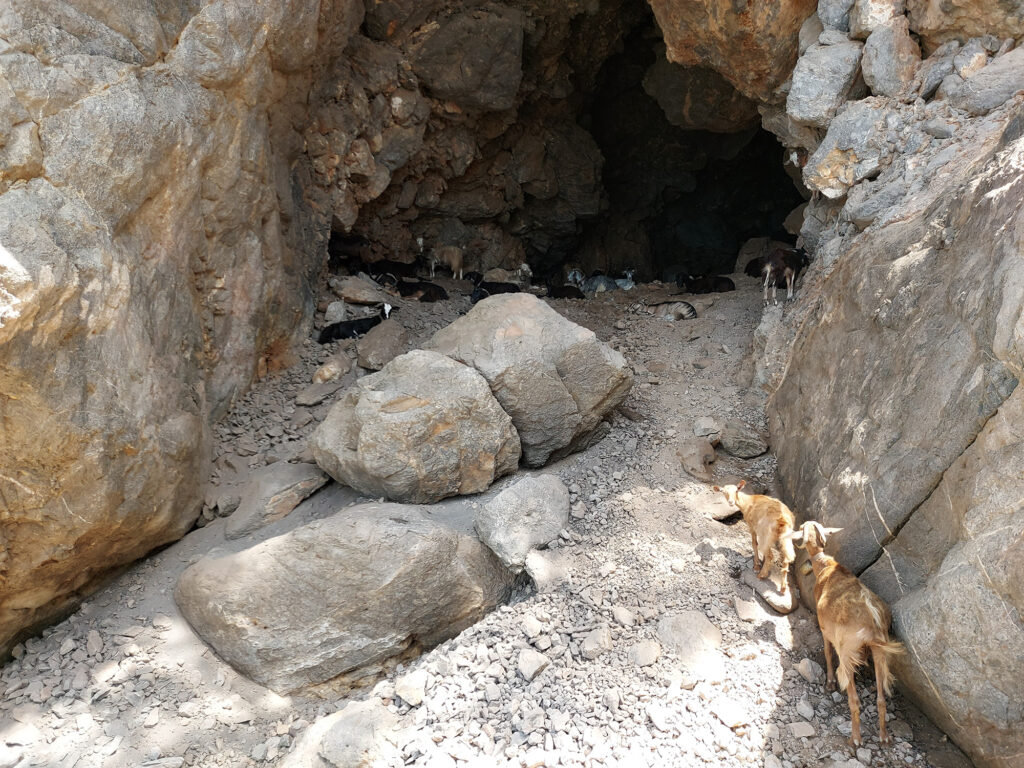
During hottest days, goats know very well where the thickest shade is.

Along the hiking trail grows a beautiful, purple thyme bush, from whose pollen bees make the famous Cretan honey, which is said to be one of the best in the world.

A few kilometers from Agios Rumelis in the direction of Hora Sfakion, you come across the beach of Agios Pavlos.

The beach got its name from the old Byzantine church of St. Paul, which originates from the 10th century. According to tradition, Saint Paul stopped in Crete on his way to Rome and baptized the local population on this beach. Later his disciple Titus became the first bishop of the island. The church is of classic Byzantine style. At the base of the church is a Greek cross, the sides of which are of equal length, with a dome at the top of the church. The church was built of stone, which was collected on the beach itself.
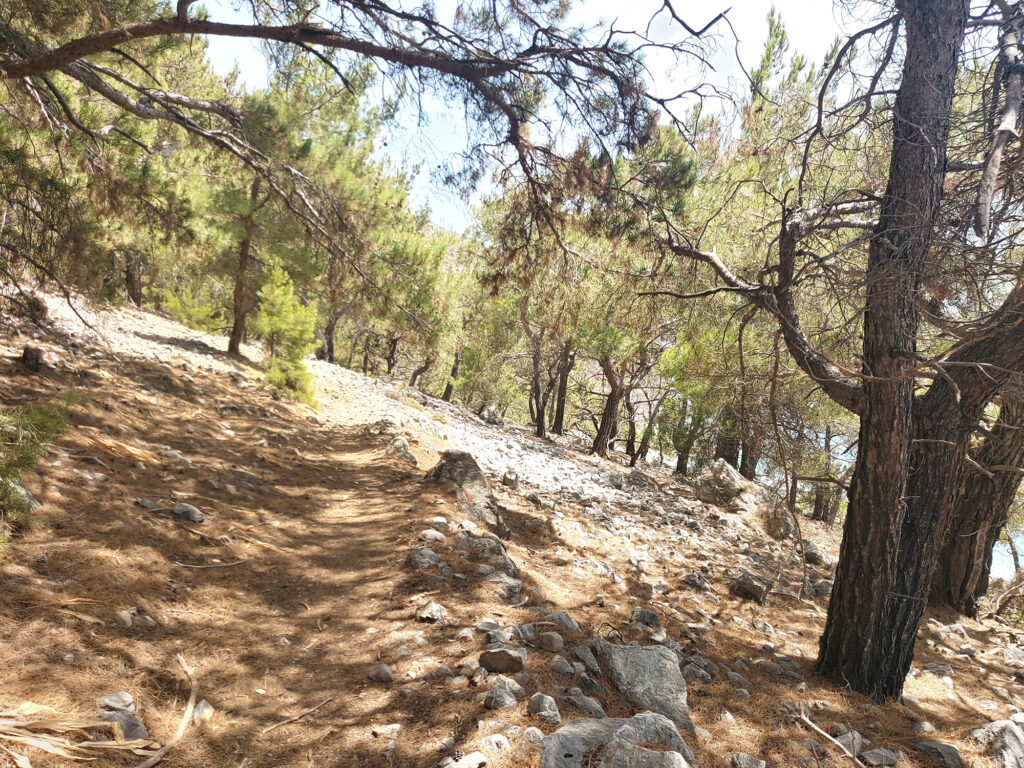
The hiking trail, from Agios Pavlos beach, continues towards Loutro and comes across a beautiful pine forest. The path is one of the most beautiful in all of Crete and forms part of the long Cretan trail, which stretches from the west to the east of the island in a length of 500 km, and which belongs to the much larger, pan-European hiking route E4, with a total length of 10,000 km.
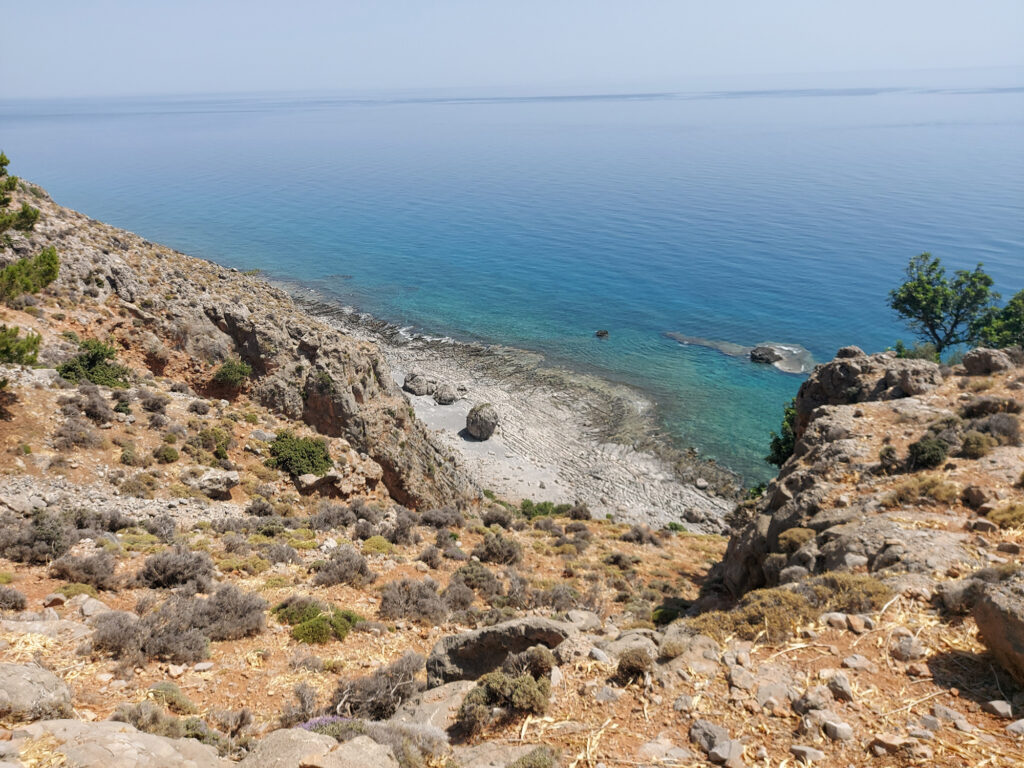
The path passes above the sea shore, past small bays. Although the sea seems close, it is difficult to approach it, almost impossible, due to extremely steep sections. During the summer heat and at temperatures above 40 degrees C, it is not possible to approach and cool off in the sea, which can be extremely frustrating.

After a bend, the first houses can be seen in the distance.

From the beach of Agios Pavlos, after 7 km you finally reach the first beach of Marmara.
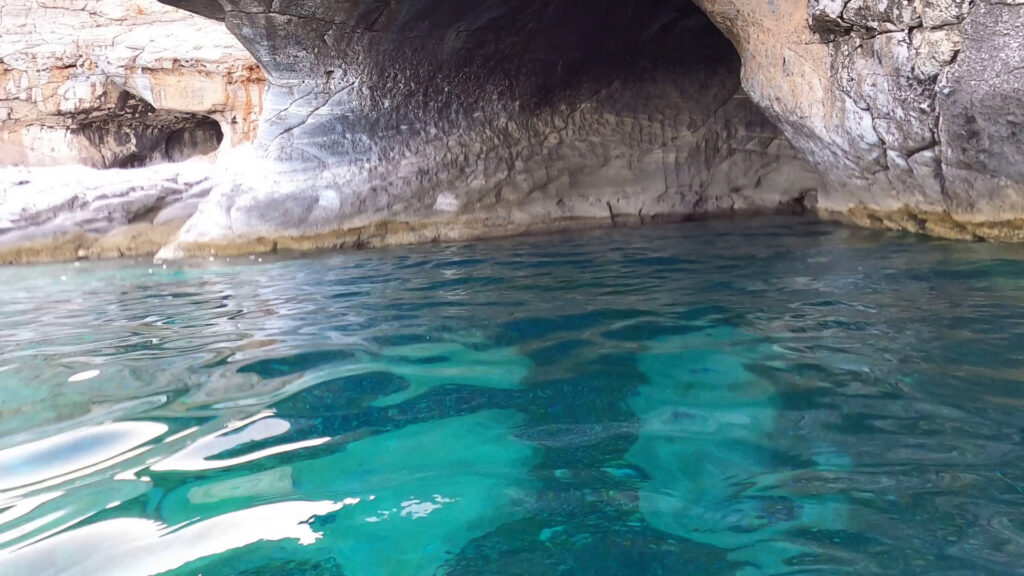
Marmara Beach is famous for its series of sea caves. Sea caves should be distinguished from classical land caves. Caves are formed in limestone rocks by erosion, with the help of underground water. Caves sometimes appear in the coastal zone, if there is underground water in them. Sea caves were created under the influence of waves. Waves constantly hit the rock, creating in its lower part caves, a depression in the rock, which can be below or above sea level. Sea caves are formed on steep coasts, while there are none at all on low coasts.

Beneath the cave, an underwater terrace usually develops, where material torn from the main rock accumulates. That smaller material moves under the influence of the waves and comes into contact with the larger rock for a longer time. By rubbing the stones against the rock, they are crushed, processed and rounded. In this way, smooth rocks and finely rounded stones are created. Marmara means marble in translation. It got its name from the fine stones that were deposited on the coast.

The water is rich in various types of fish. The picture shows a school of whitefish, which likes to live in a group along a pebble or rocky shore. The movements of the fish in the school are synchronized and coordinated with the movements of the leader fish. When they are frightened, all the fish in the school move and escape at the same time.

The most beautiful fish of the Mediterranean is Coris Julis, Mediterranean rainbow wrasse. It belongs to the wrasse family. It is adorned with an incredible palette of colors, the blue color of the scales turns into red, purple into yellow. The people of the coast call it bishop, because it resembles bishop’s robes.

The male differs from the appearance of the female. It is green in color, larger and has a blue vertical stripe between the dorsal and pectoral fins.

Females have five vertical blue stripes, which give the impression of a checkered pattern. A black spot is clearly visible on the back. They spend the night buried in the sand.
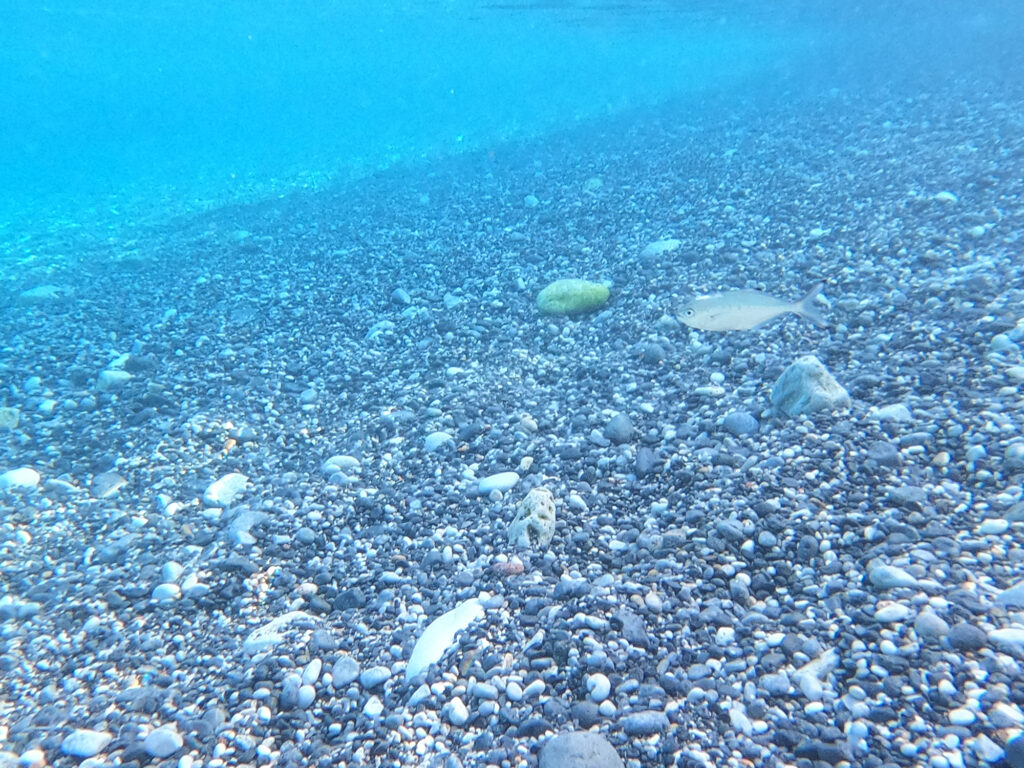
Sarpa Salpa (dream fish) is a fish with a developed ability for camouflage. It skillfully blends into the background with its color. Fishermen do not catch it because it is poisonous. After consuming salpa meat, hallucinations occur, characteristic of LSD abuse.

Saddled Seabream (Oblada melanura) belongs to the Sparidae family. The shape of its body is oval and elongated, the eyes are bulging and round, and the color of the scales is dark grey to brown. It has a characteristic black band on its tail.

Above the Marmara beach several goats demonstrate their mountaineering skills.
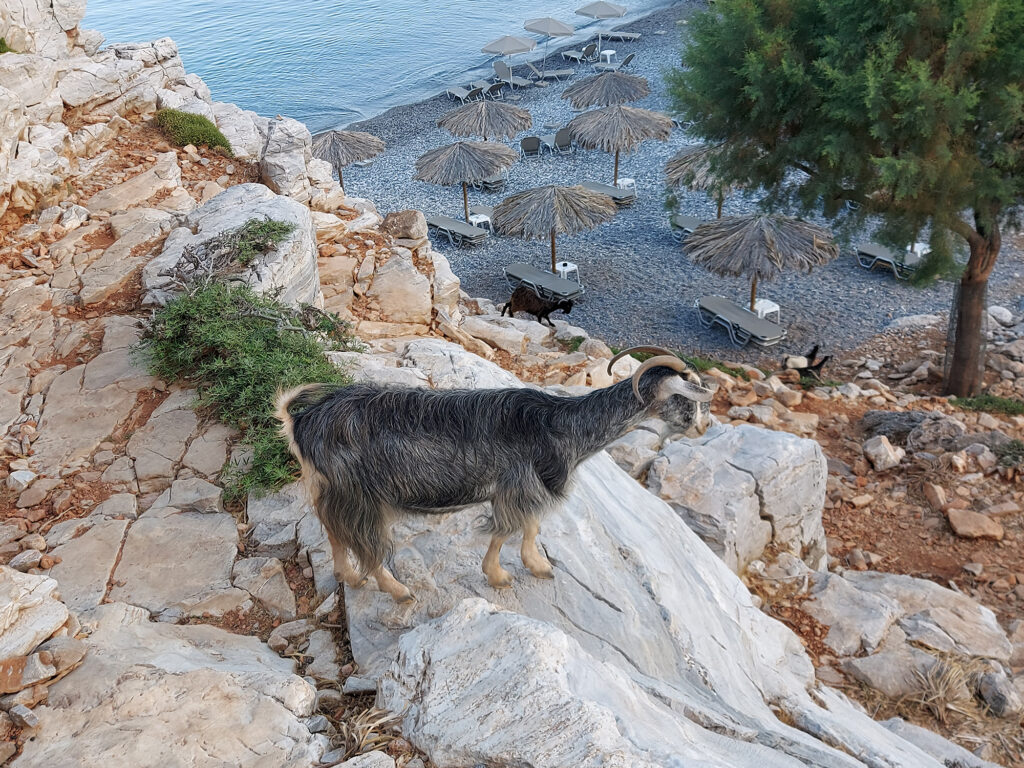
Goats are not afraid of heights.

Marmara is located at the exit of the Aradena Canyon, which is also a popular hiking destination.

After Marmara, you come across Likos beach, which has several taverns with overnight accommodation.
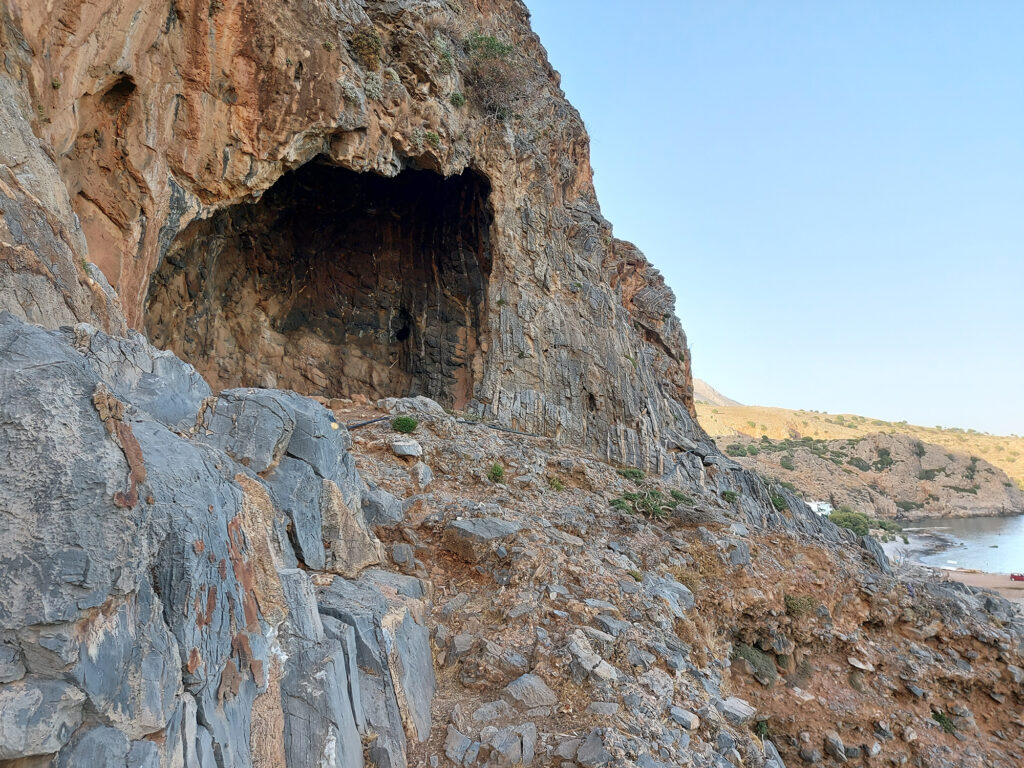
The path passes through a steep section above the sea and a small cave.

The pleasant smell of aromatic herbs spreads along the sea coast. One such plant is hemp (Vitex agnus – castus). It is believed to have anaphrodisiac properties – it reduces libido. One should be familiar with botany and properties of herbs otherwise there could be problems.

This is not a sunset on Likos, but a moonrise.
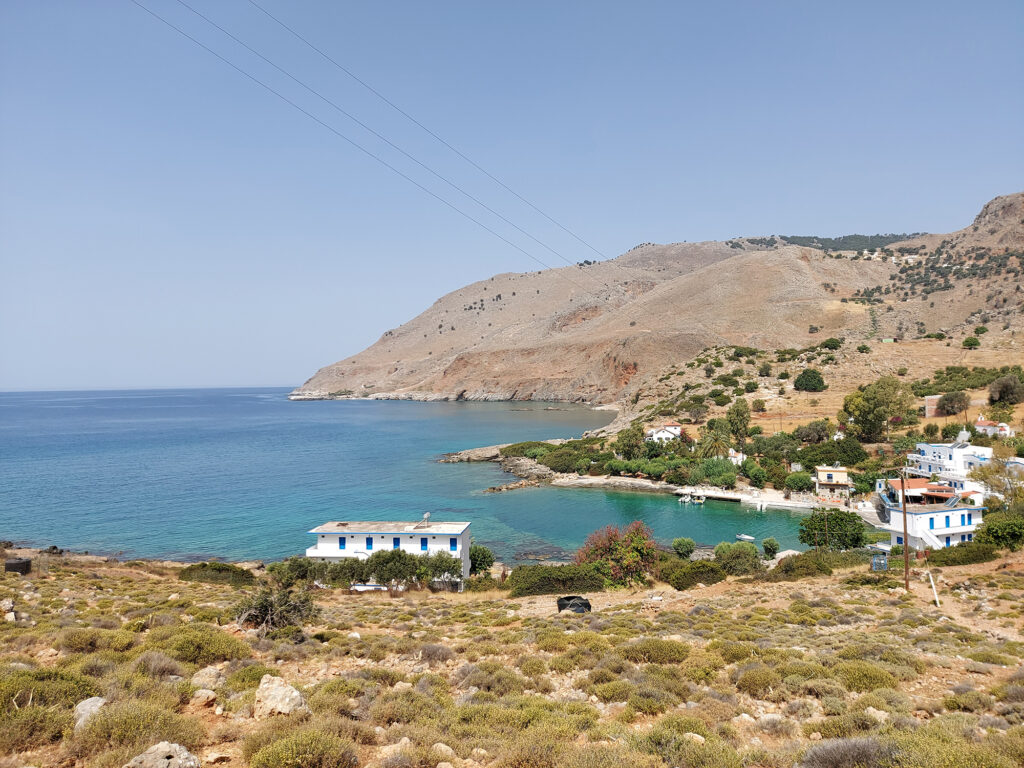
Next to Likos is another beach, Finikas.
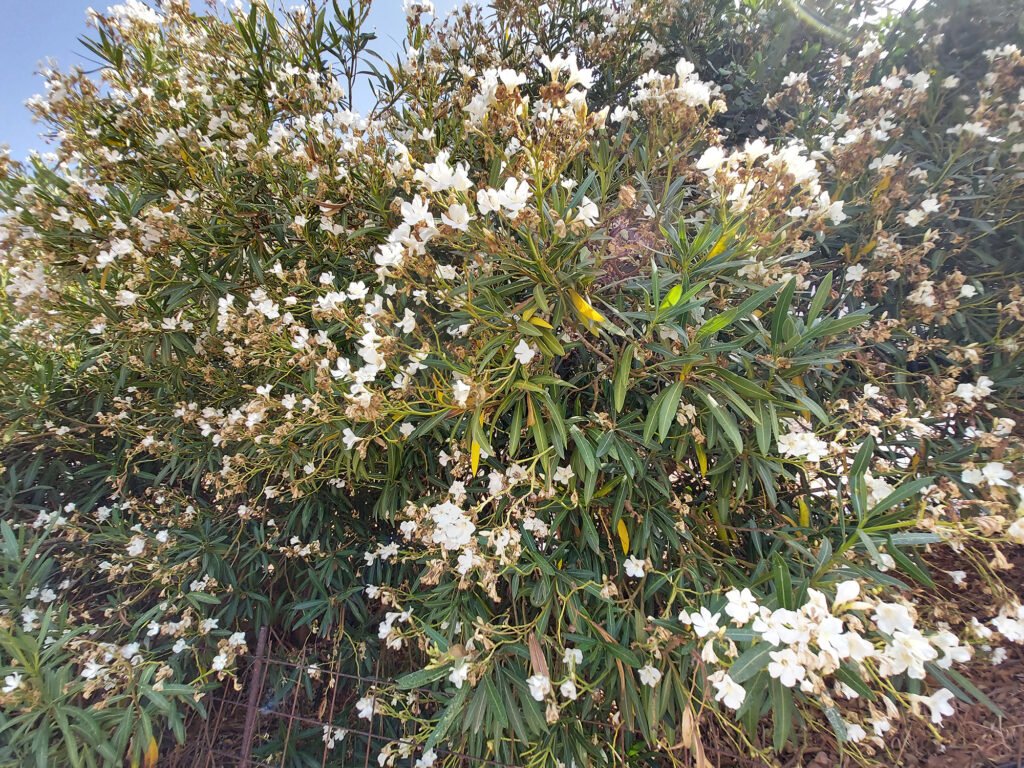
Next to the path, a oleander is planted, the flower of which is white.

The fortress above the town of Loutro is called Kules, which is the Turkish term for fortress. On the shores of Crete, fortresses were built above almost every settlement, which defended the island from pirates.
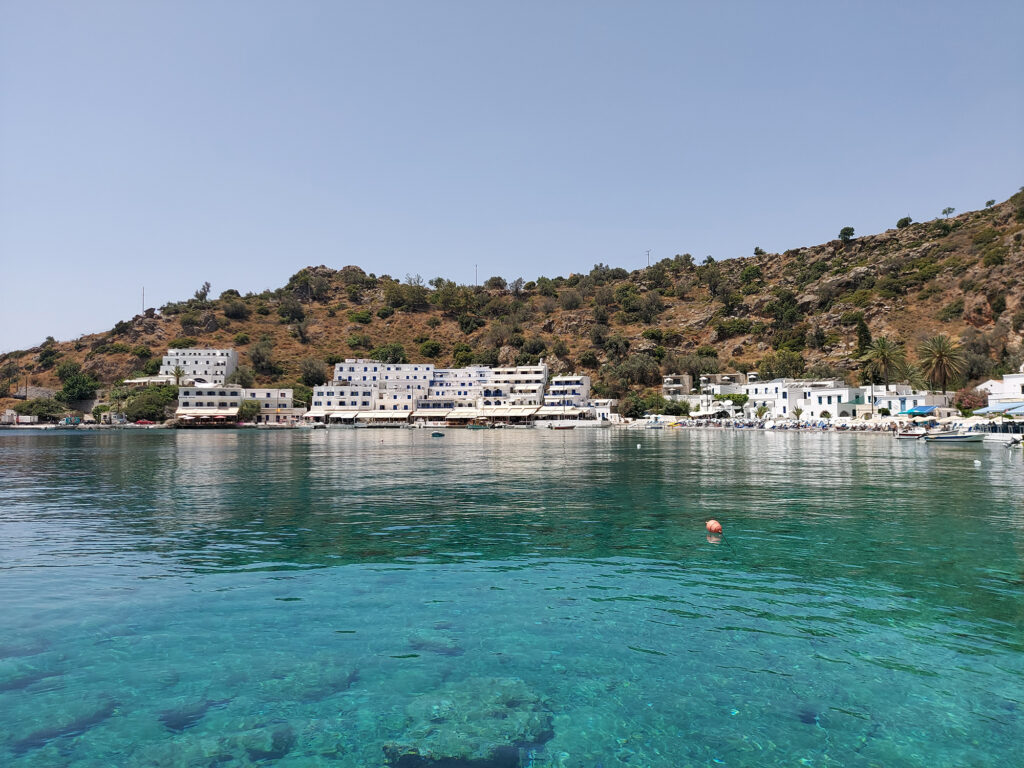
Below the fortress is the charming fishing village of Loutro.

One of the most unusual inhabitants of the Loutra coast is the sea needle (garfish), lat. Belone Belone. Seen from above, the sea needle is blue or green. The body of the sea needle fish is long, narrow and elongated, up to 75 cm long.

The needle is actually on the tail, which can be seen nicely in this picture. It does not have a spine, like a swordfish or a stingray, but the pointed part after the eyes is an elongated jaw. It mainly inhabits shallows with tall grass, where it spawns. After spawning, it goes to deeper waters. The needle fish is a predator that feeds on smaller fish.

When the heat becomes unbearable, it is wise to give up further hiking and take a boat.
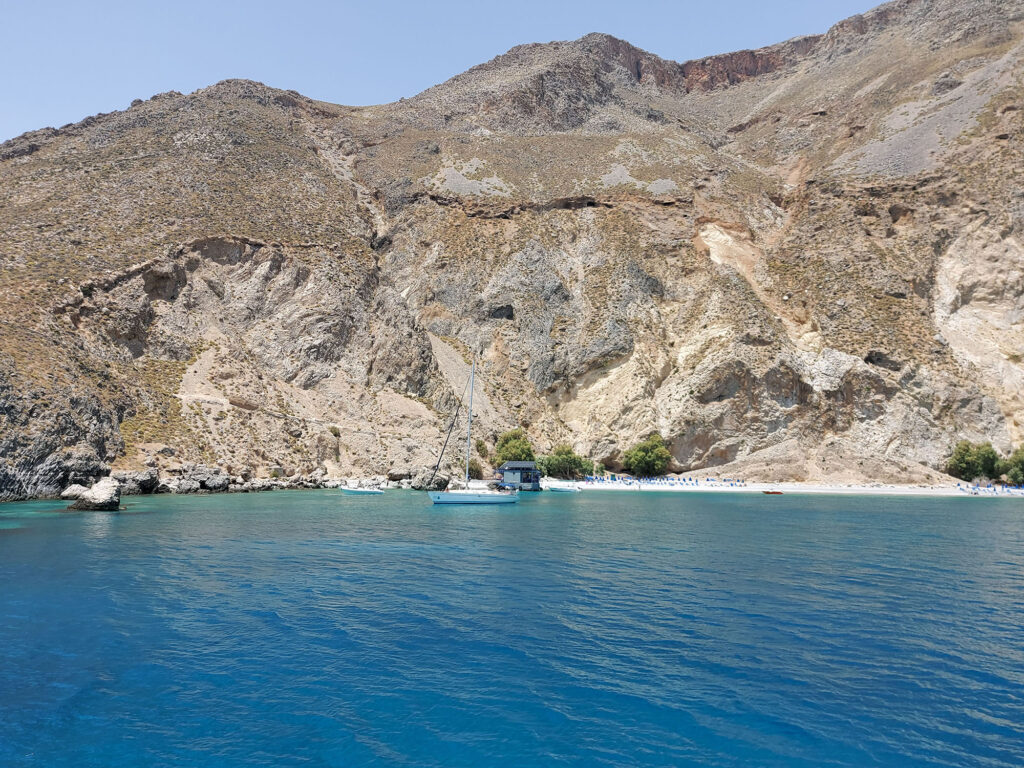
Glyka Nera is one of the most beautiful beaches on the island of Crete.

In translation Glyka Nera means “sweet water”, because underground water flows into the sea from the land. Fresh water flows underground from the pebbly soil, as evidenced by air bubbles rising from the pebbly on the sea floor. Due to the underground water, the temperature of the water on the beach is much lower than in other places.

The sea of Glyka Nera beach is distinctly blue. The fish Symphodus tinca or Lumberak is seen here. Male and female differ in size and colors. The female has brown patterns, as seen in the picture, while the male is much more colorful and lighter in color – red, blue and green. The male’s colors come to life fully during the mating season.

In the distance you can see another canyon – Ilingas and many sea caves.

And finally Hora Sfakion, a place that is connected to the rest of the world! The fishing village has a port and a boat line connects Agios Rumeli, Loutro, Gavdos Island and nearby beaches.

The Samaria Canyon in Crete is a remarkable natural formation characterized by steep descents, unique rock formations, and diver
Read More
Mount Ida, the highest peak in Crete at 2,456 meters, holds significant mythological importance as the birthplace of Zeus, who w
Read More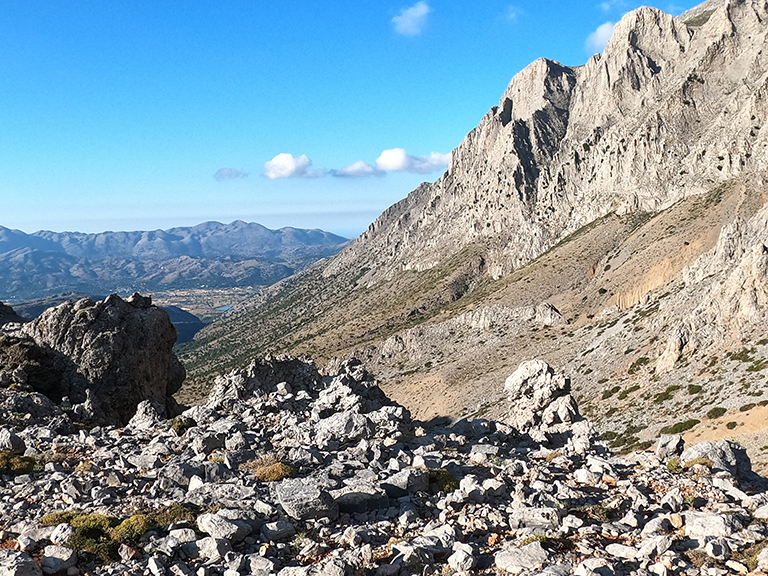
Mount Dikti, a lesser-visited mountain in eastern Crete, offers a unique hiking experience with its limestone composition and mo
Read More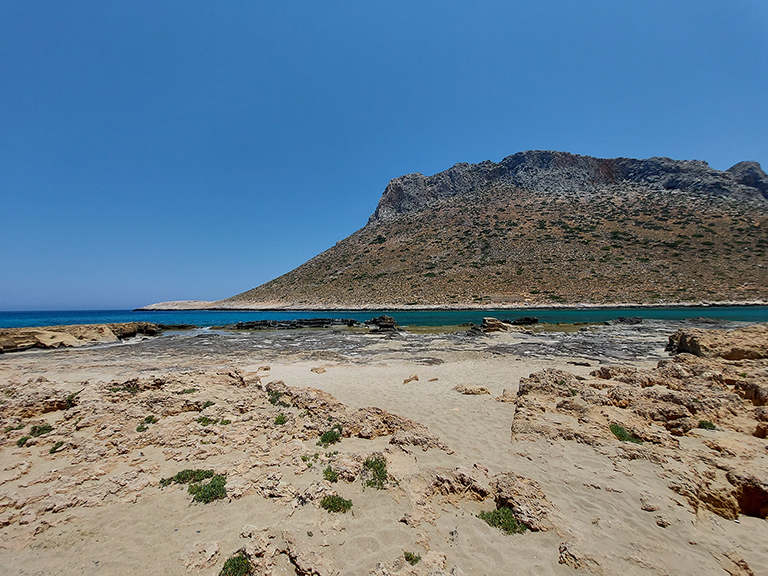
Stavros town, located near Chania town, is famous for its Zorba the Greek beach, which gained popularity after the 1964 movie &#
Read More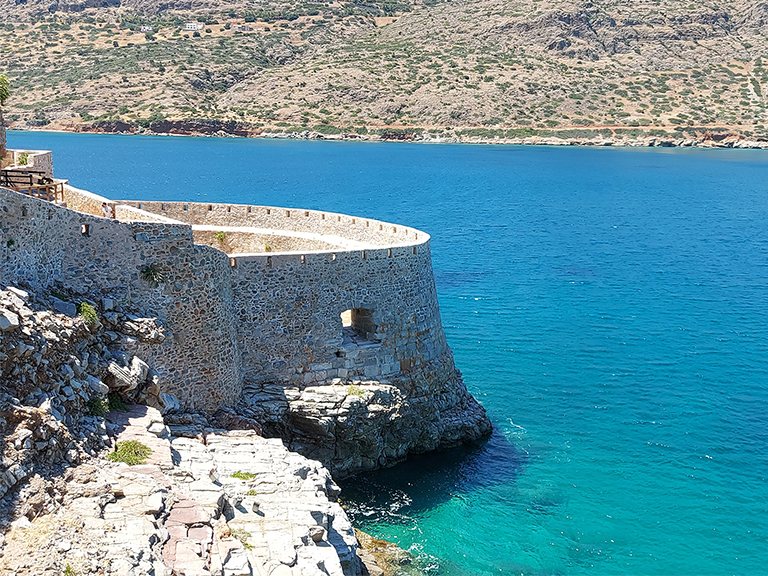
Spinalonga is a Venetian fortress built in the 16th century on a small island in the Gulf of Elounda, Crete. The fortress was bu
Read More